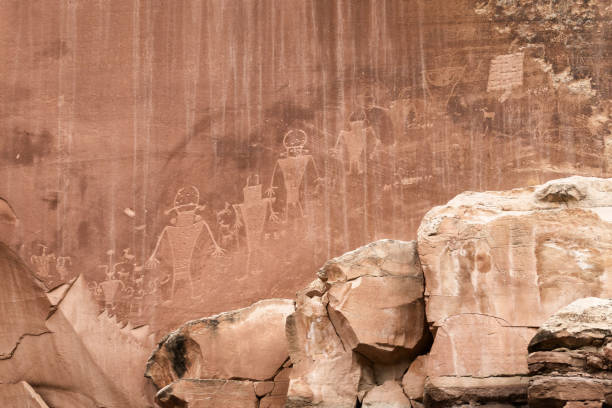Blog
Ancient Artz: Exploring Timeless Creativity and Cultural Legacy

Ancient Artz represents a fascinating journey into the creative expressions of civilizations long past. These artistic masterpieces, ranging from cave paintings to intricate sculptures, provide a window into the beliefs, traditions, and daily lives of ancient societies. Through this exploration, one can appreciate the ingenuity and cultural significance that these works hold.
The Origins of Ancient Artz
The roots of Ancient Artz can be traced back tens of thousands of years, beginning with the earliest known examples of human creativity. Prehistoric cave paintings, such as those found in Lascaux, France, depict vivid scenes of animals and hunting practices. These early works reflect the desire to document and communicate, laying the foundation for artistic traditions that would evolve over millennia.
As societies transitioned from nomadic lifestyles to settled communities, art became more complex. The advent of agriculture allowed for the establishment of permanent settlements, fostering the development of distinct artistic styles and techniques. Pottery, carvings, and murals began to emerge, showcasing the diversity of human expression.
The Role of Symbolism in Ancient Artz
Symbolism played a crucial role in Ancient Artz, serving as a means of conveying complex ideas and beliefs. In many cultures, art was deeply intertwined with religion and spirituality. For instance, Egyptian art often depicted deities, pharaohs, and scenes from the afterlife, emphasizing the culture’s focus on immortality and divine order.
Similarly, in Mesopotamia, art was used to glorify rulers and their achievements. Intricately carved reliefs and statues communicated power and authority, reinforcing societal hierarchies. The use of symbols, such as animals or celestial motifs, further enriched these narratives.
Techniques and Materials
Ancient Artz was characterized by a wide variety of techniques and materials, reflecting the ingenuity of early artisans. Stone, clay, metal, and wood were commonly used, with each material requiring specific skills to manipulate. Techniques such as carving, casting, and painting allowed for the creation of durable and visually striking works.
One notable example is the use of bronze in ancient China. The intricate designs and precision seen in bronze vessels demonstrate a mastery of metallurgy and artistic innovation. Similarly, the mosaics of ancient Rome showcase the meticulous craftsmanship required to arrange thousands of tiny tiles into elaborate patterns and images.
Cultural Exchange and Influence
The spread of Ancient Artz was often facilitated by trade and conquest, leading to cultural exchange and the blending of artistic traditions. The Silk Road, for example, connected the East and West, allowing for the exchange of goods, ideas, and artistic styles. This interaction enriched the artistic landscapes of regions along the route, resulting in unique hybrid forms.
Greek art, renowned for its focus on realism and proportion, significantly influenced Roman art and architecture. The Romans adopted Greek techniques and motifs, incorporating them into their own creations. This cross-cultural influence underscores the interconnectedness of ancient civilizations.
Preservation and Rediscovery
Many works of Ancient Artz have endured the test of time, preserved through natural or deliberate means. However, countless pieces have been lost due to decay, natural disasters, or human conflict. Efforts to preserve and study these remnants are vital for understanding the past.
Archaeological excavations have played a key role in uncovering ancient art. The discovery of the Terracotta Army in China, for example, revealed thousands of life-sized statues, offering insight into the funerary practices and artistic achievements of the Qin dynasty. Similarly, the preservation of Mayan murals provides a glimpse into the rich cultural and religious life of Mesoamerica.
Modern Appreciation of Ancient Artz
Today, Ancient Artz continues to inspire and captivate audiences worldwide. Museums and galleries display these timeless works, allowing people to connect with the creativity and resilience of ancient cultures. Additionally, advancements in technology, such as 3D scanning and virtual reality, have made it possible to explore ancient art in new and immersive ways.
The study of Ancient Artz also informs contemporary artistic practices. By examining the techniques and themes of the past, modern artists find inspiration for their own creations, bridging the gap between ancient and modern worlds.
Challenges in Conservation
The preservation of Ancient Artz presents several challenges, including environmental factors, human activity, and limited resources. Climate change and pollution pose significant threats to fragile artifacts, accelerating their deterioration. Efforts to mitigate these impacts require collaboration among scientists, conservators, and policymakers.
Looting and illicit trade further endanger ancient art. The loss of cultural heritage through these activities underscores the need for stricter regulations and international cooperation to protect these invaluable treasures.
Educational and Cultural Impact
Ancient Artz serves as a powerful educational tool, offering insights into history, culture, and human creativity. By studying these works, students and scholars gain a deeper understanding of the values and achievements of ancient societies. This knowledge fosters an appreciation for diversity and the shared heritage of humanity.
Cultural festivals and events celebrating ancient art further highlight its relevance. These gatherings promote awareness and encourage dialogue, ensuring that the legacy of Ancient Artz remains alive for future generations.
Conclusion
Ancient Artz represents a profound testament to human ingenuity and cultural identity. From its origins in prehistoric caves to the grandeur of classical civilizations, this art form continues to resonate across time and space. By preserving and studying these works, humanity ensures that the stories and achievements of the past remain a source of inspiration for generations to come.
Blog
myliberla.com blog: Exploring Innovation, Technology, and Trends

The Evolution of Digital Content
Over the past decade, digital content has undergone significant transformation. From traditional blogs to interactive multimedia experiences, online platforms have continuously adapted to user preferences. With audiences demanding more engaging and informative material, the shift toward high-quality content has been inevitable. This evolution has redefined how businesses and individuals interact with information.
The Role of Blogging in the Digital Age
Blogging has remained a fundamental aspect of digital marketing and personal expression. Despite the rise of video content and podcasts, written articles continue to hold value. A well-maintained blog not only enhances credibility but also contributes to search engine optimization. Informative posts help brands establish authority while providing readers with insightful knowledge.
Why Consistency Matters in Content Creation
Producing consistent content is essential for building a loyal audience. Regular updates keep readers engaged and encourage return visits. Additionally, search engines favor frequently updated websites, improving visibility in search results. By maintaining a steady publishing schedule, a blog remains relevant in an increasingly competitive digital space.
Leveraging SEO for Greater Reach
Search engine optimization (SEO) plays a crucial role in content discovery. Strategic keyword placement, proper structuring, and high-quality backlinks contribute to better rankings. By focusing on on-page and off-page optimization, a blog can attract a broader audience. Furthermore, search engines prioritize valuable and user-friendly content, making SEO an indispensable tool for digital success.
The Impact of AI on Blogging
Artificial intelligence has transformed content creation. AI-driven tools assist in generating topic ideas, optimizing headlines, and even automating writing tasks. While human creativity remains irreplaceable, AI enhances efficiency. Writers can leverage these advancements to streamline their workflow and produce more engaging articles.
Trends Shaping the Future of Blogging
Several emerging trends are shaping the future of blogging. Interactive content, voice search optimization, and personalized recommendations are gaining traction. Readers expect tailored experiences, requiring content creators to adapt. By embracing innovation, bloggers can remain ahead of industry shifts and meet evolving consumer demands.
The Importance of Visual Content
Incorporating images and videos enhances a blog’s appeal. Visual elements break up text, making content more digestible. Additionally, infographics and interactive media improve retention rates. A well-designed blog integrates compelling visuals to complement its written material, fostering a more immersive user experience.
Engaging Audiences Through Social Media
Social media platforms serve as powerful distribution channels for blog content. Sharing articles across multiple networks increases visibility and engagement. Encouraging discussions and responding to comments fosters community interaction. By utilizing social media effectively, bloggers can extend their reach and build lasting relationships with their audience.
Monetization Strategies for Bloggers
Many bloggers turn their platforms into income streams. Sponsored posts, affiliate marketing, and ad placements generate revenue. Membership programs and premium content offerings provide additional monetization opportunities. By diversifying income sources, bloggers can sustain their efforts while delivering valuable content to their readers.
Conclusion: The Future of Blogging
Blogging continues to evolve, adapting to technological advancements and audience preferences. Success in the digital landscape requires consistency, SEO expertise, and engagement strategies. By staying informed about industry trends and leveraging new tools, content creators can thrive in an ever-changing environment. With innovation driving progress, the future of blogging holds limitless possibilities.
Blog
ScoopUpdates.com Is Changing the Way You Follow News

THE DIGITAL NEWS LANDSCAPE IS EVOLVING FAST
ScoopUpdates.com has become a disruptive force in the digital news industry. Readers are expecting more than simply headlines in this day and age, when information is both plentiful and overwhelming. They need valuable insights, well-curated articles, and noise-free real-time updates. To address that demand, ScoopUpdates.com has proactively intervened.
Data-driven storytelling, social media virality, and mobile-first tactics have all influenced the digital news landscape. Despite all of that advancement, transparency and trust are still highly valued. This platform stands out for that reason. ScoopUpdates.com offers more than simply breaking news, in contrast to traditional news aggregators. Rather, it offers readers balance, context, and easily readable summaries so they may remain educated without becoming exhausted.
WHY SCOOPUPDATES.COM STANDS OUT IN A CROWDED FIELD
It’s easy to become lost among the thousands of news portals. However, this platform stands out because to the implementation of various important features. First and foremost, it presents news in an organized and urgent manner. This platform places a higher priority on accuracy and narrative flow than others that focus on sensationalism and fragmentary pieces.
Personalization is also very important. Whether it’s politics, entertainment, technology, business, or global events, users may choose the areas that are most important to them. The webpage then changes to provide a more customized reading experience. Longer engagement and higher satisfaction are encouraged by such a feature.
Furthermore, readers are not left in the dark about the source of the material. Every article is referenced, checked, and connected to trustworthy sources. We don’t consider transparency to be an afterthought.
DAILY DIGESTS THAT EMPOWER, NOT OVERWHELM
Concern over news weariness is rising, particularly as doomscrolling becomes more commonplace. ScoopUpdates.com introduced daily digests as a solution to this problem. The most significant headlines of the day are condensed into a clear and understandable style in these summaries.
With this approach, people with hectic schedules may remain informed without devoting hours to reading the news. Crucially, the digests are written coherently and clearly, utilizing common language that keeps readers rooted in reality.
Additionally, integrating multimedia improves comprehension. There are bullet summaries, charts, infographics, and brief video explainers in place of drawn-out paragraphs. These facilitate understanding of difficult subjects like changes in the economy or geopolitics.
SCOOPUPDATES.COM’S COMMITMENT TO ETHICAL JOURNALISM
Although sensationalism might encourage clicks, it rarely fosters trust. This platform takes a different approach as a result. Stories are guaranteed to be both timely and morally sound by a rigorous editing standards. Unverified assertions and rumors are eliminated.
Before being published, articles go through a rigorous editorial procedure. Updates are released in phases with distinct time stamps and context comments during emergencies or breaking news. This prevents false information without compromising performance.
Underreported stories—those that don’t hit the front page of mainstream media but have social, environmental, or humanitarian significance—are also highlighted by ScoopUpdates.com. This well-rounded strategy promotes a society that is more knowledgeable and compassionate.
THE USER EXPERIENCE: SMOOTH, FAST, AND FOCUSED
The user interface is one of its main advantages. The website is clear and free of distractions and clutter. Readers are kept focused on the material by using simple typeface, sensible classification, and few advertisements. Whether using a desktop, tablet, or mobile device, navigation is simple.
Among the features that enhance the user-friendliness are offline reading, dark mode, and personalized fonts. Transitions are smooth, and pages load quickly. Therefore, the platform accommodates your tastes, regardless of whether you’re a casual reader or a news fanatic.
Push notifications are strategically timed—not incessant pop-ups, but thoughtfully chosen warnings that are important. This well-considered design keeps engagement high and avoids burnout.
INNOVATION THROUGH TECHNOLOGY AND AI INTEGRATION
The platform has incorporated AI technologies in order to remain competitive. Backend algorithms provide tailored article recommendations, trend analysis, and real-time fact-checking. Behind the scenes, these tools make sure that readers always receive accurate and pertinent material.
Additionally, ScoopUpdates.com detects bias and tone using natural language processing. This enables the editorial staff to polish the wording for impartiality and balance. Credibility and user trust have grown as a result of this over time.
Interfaces that rely on chat are also being tried. Users may soon be able to employ interactive AI chatbots to acquire summaries or ask follow-up inquiries. The platform will become even more dynamic and user-friendly as a result.
COMMUNITY ENGAGEMENT AND USER CONTRIBUTIONS
Its community-driven concept is another distinctive aspect. Through user-submitted articles, polls, and comments, readers are invited to become involved. By giving common voices a platform, this democratic layer enriches the news ecosystem.
Additionally, regional forums have been introduced by ScoopUpdates.com to allow people to talk about topics that are pertinent to their communities. While remaining rooted in factual discourse, these venues foster a feeling of community through municipal developments and cultural trends.
Both human editors and computers manage moderation, guaranteeing a civil and educational atmosphere. Disinformation and trolling are dealt with quickly while upholding a high level of engagement.
MULTILINGUAL EXPANSION AND GLOBAL OUTREACH
Although the site started out in English, work to translate it into other languages has already begun. Language restrictions will not prevent non-native English speakers from accessing high-quality content thanks to our global perspective. Local editors either develop native content or translate it.
In addition to language, localization is important. News from regional editions is intimately related to local political and cultural contexts. These editions are substantial and carefully chosen; they are not afterthoughts.
The brand is further strengthened by international collaborations with independent newsrooms. These partnerships are driven by common ideals of impact, openness, and integrity, which guarantee uniformity throughout.
PARTNERING WITH EDUCATORS AND INSTITUTIONS
Collaboration with academic institutions is another significant aspect. Simplified news editions designed for schools are now available to educators. These short stories promote media literacy in young children by introducing them to current events in an approachable way.
Partnerships with universities also give access to validated data sets and analytical tools. The platform can serve as a case study for journalism students studying news formatting, audience involvement, and ethics. As a result, ScoopUpdates.com serves as both an instructional resource and a content outlet.
THE MOBILE APP THAT PUTS NEWS IN YOUR POCKET
The website is only one aspect of accessibility. The mobile application was created to offer a smooth experience while on the go. It appeals to a tech-savvy clientele with features like voice-activated search, customisable alerts, and offline reading.
The app, which is compatible with both iOS and Android, adds mobile-specific benefits without sacrificing editorial quality. The news becomes even more dynamic and captivating with the addition of short-form videos, location-based notifications, and widget integration.
The app also syncs between devices. You may begin reading on your phone and continue precisely where you left off on your tablet. These well-considered features demonstrate the platform’s awareness of contemporary digital practices.
SCOOPUPDATES.COM’S PLAN FOR THE FUTURE
The platform is already making plans for the future as the digital landscape keeps changing. The plan includes decentralized journalism hubs, Web3 integration for content ownership, and blockchain verification for sources. ScoopUpdates.com hopes to lead the news revolution with this progressive approach.
Additionally, the idea of starting a creator fund is being discussed. With the help of this program, independent journalists would have the means to report on important but frequently ignored topics.
The agenda also includes sustainability. To keep its digital footprint as little as possible, the team is investigating carbon offset schemes, ethical advertising strategies, and green hosting options.
FINAL THOUGHTS ON SCOOPUPDATES.COM’S IMPACT
Clarity and trust are more important than ever in a time of short attention spans and information overload. Both are offered by ScoopUpdates.com, along with honesty, accessibility, and customisation. The platform is a movement toward inclusive, knowledgeable, and ethical journalism rather than just another news website.
This platform has become a digital mainstay by accurately presenting pertinent material, using technology to promote transparency, and involve the community at every turn. Its trajectory points to both further expansion and a growing influence on the global news ecosystem.
ScoopUpdates.com is the place to go if you’re looking for the facts without the hype. It has demonstrated that news may be both timely and perceptive, as well as effective and moral. What about that equilibrium? It is the most important thing for readers nowadays.
Blog
Unlocking Global Travel Insights: https://tourism-network.net

The Importance of Tourism Networks
https://tourism-network.net serve as vital platforms for connecting travelers, businesses, and local communities. By fostering collaboration, these networks enhance accessibility, provide insights, and improve travel experiences. With the rise of digital platforms, travelers now benefit from shared knowledge, enabling them to make informed decisions when planning their trips.
How Tourism Networks Benefit Travelers
Tourism networks streamline access to essential travel information. From accommodation recommendations to transport options, travelers gain valuable insights. Additionally, these networks facilitate cultural exchange by connecting tourists with local communities, enriching their overall experience.
Role of Digital Platforms in Tourism
Digitalization has transformed the way tourism networks operate. Online platforms offer real-time updates, destination guides, and user-generated content. Virtual communities enable travelers to share experiences, receive recommendations, and access exclusive travel deals. The availability of mobile applications further enhances accessibility, making it easier for tourists to navigate their destinations.
Sustainable Tourism and Community Involvement
Sustainability plays a crucial role in modern tourism. Networks promote responsible travel by encouraging eco-friendly practices and supporting local economies. Community-based tourism initiatives ensure that cultural heritage is preserved while providing employment opportunities. By participating in these networks, travelers contribute positively to environmental conservation and local development.
How Businesses Benefit from Tourism Networks
Tourism-related businesses leverage these networks for increased visibility. Hotels, tour operators, and transport services can reach a broader audience through digital marketing strategies. Additionally, customer feedback helps businesses refine their services, ensuring customer satisfaction. Partnerships formed within tourism networks contribute to mutual growth and industry development.
Tips for Maximizing Travel Experiences
- Join reputable tourism networks for reliable information
- Research destinations through user-generated reviews and expert recommendations
- Utilize digital platforms for itinerary planning and real-time updates
- Engage with local communities to gain authentic cultural experiences
- Support sustainable tourism initiatives by choosing eco-friendly options
Future of Tourism Networks
The integration of artificial intelligence and data analytics is set to revolutionize tourism networks. AI-driven recommendations will offer personalized travel experiences, while blockchain technology ensures secure transactions. As technology advances, these networks will become more efficient, creating seamless experiences for travelers worldwide.
FAQs
What is a tourism network?
- A tourism network is a collaborative platform connecting travelers, businesses, and local communities to enhance travel experiences.
How do tourism networks help travelers?
- They provide valuable travel insights, recommendations, and real-time updates, making trip planning more convenient.
Are tourism networks beneficial for businesses?
- Yes, businesses gain visibility, customer engagement, and networking opportunities through these platforms.
How can travelers contribute to sustainable tourism?
- By supporting local businesses, practicing eco-friendly habits, and engaging in responsible tourism activities.
What are the latest trends in tourism networks?
- AI-driven personalization, blockchain-based transactions, and virtual reality travel experiences.
-

 Health11 months ago
Health11 months agoUnlocking Knowledge and Wellness: Exploring the Vital-Mag.net Blog
-

 Apps11 months ago
Apps11 months agoHomeworkify: Revolutionizing the Way Students Approach Assignments
-

 News10 months ago
News10 months agoKristen Archives: Exploring a Treasure Trove of Online Stories
-

 Apps11 months ago
Apps11 months agoMangaBuddy: Your Gateway to Unlimited Manga Adventures
-

 Crypto10 months ago
Crypto10 months agoCrypto30x.com Gigachad: Redefining Cryptocurrency Success
-

 Apps10 months ago
Apps10 months agoSimpCity: Exploring a Unique Online Community
-

 Health11 months ago
Health11 months agoExploring the Mega-Personal.net Health Archives: A Treasure Trove of Information
-

 Apps10 months ago
Apps10 months agoTraceLoans.com Business Loans: Empowering Entrepreneurs with Financial Solutions
